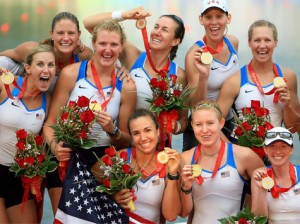The readings this week about writing resonated pretty poignantly with my own experience. Reading them, I couldn’t help but reflect on my own history with writing, since the authors we read were all so passionate about their relationships to the craft.
In 6th grade, I was a crybaby. My mom is an immigrant who went from Iran to Boston for college; my dad is the son of an Iranian doctor. Both of them put an enormous amount of pressure on me as a child to succeed—get A’s, impress my teachers. Long, excruciating hours were spent at night at our dinner table when my dad got home, during which he drilled me incessantly on how to carry out math problems that I couldn’t care less about. Though I love my dad deeply, he isn’t perfect—patience, in particular, is not one of his strengths. The pressure they placed on me manifested in loud verbal rebukes every time I brought home anything below a B, forgot my homework in my locker, missed an assignment. I chalk their attitude up to a feeling of helplessness, especially in regards to my mom; she couldn’t actually sit down with me and walk me through the work as it got more difficult, so her way of helping was to push me, to ensure success, keep me on track at all costs. To my parents, school was the only way I could emulate their own success in this cold, foreign (to them) country. They knew that this country doesn’t really promise anyone success, despite the cruel fantasy of the American dream in which we’re supposed to believe.
One day in 6th grade, I got a C on an essay in Mr. C’s English class—the crybaby in me mercilessly unleashed itself. You have to understand that a C was absolutely unacceptable, and sure to result in a seriously upsetting confrontation at home. So, I started crying as soon as I got it—in the classroom. Mr. C was a kind, funny, empathetic man, and I still talk to him sometimes these days; that morning, he more or less saved my emotional development from the consequences of overwhelming parental pressure. He took me outside, talked to me, asked me about what was going on and why I was crying. At a parent-teacher conference, he spoke honestly to my parents, and ever since then they did their best to let me succeed on my own terms.
But the best thing about Mr. C is that he paid so much attention to my inner world. He saw me writing poems in one of those white-and-black spangled comp books, and asked to read them. They were terrible, of course—I read them, still, and see them as little attempts at exploring my emotional world in immature extremes and allegories. But nonetheless, they helped me grow and reflect on what was going on in my life. Without Mr. C’s encouragement, I may never have valued my own thoughts in writing. He is why to I write, and why I love to share my writing. The incredible thing about him was that he didn’t really care what I was writing. The poems weren’t for class, and they were bad—but he was never hesitant to tell me that they were great, always excited to read them, always encouraging.
One thing comes to mind about the readings for Tuesday. I have become my own writing audience, my own person to whom I write. By that I mean that, at a certain point, I realized that I wanted my writing to be good before showing it to people. It was vital that I develop a way of pushing myself to write and edit without needing a teacher or friend to carry me along, so I started to write to myself. In poems, songs, essays, I always write to make something clear to myself, to think through my emotions and experiences in such a way that they attain a certain level of clarity for me and not anyone else. Then, I can show it to others. This is a technique that I didn’t really encounter in the readings as a method, so I thought I’d include it, particularly since it converts writing from simply thinking into a way of getting to know oneself.

